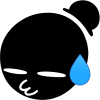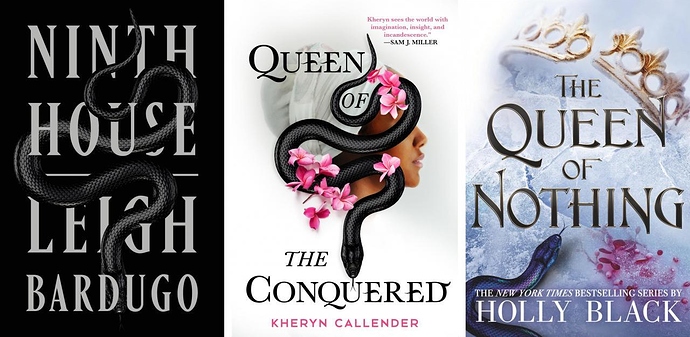YES, this is a really huge thing. LGBTQIA+ creators are held to ridiculously high standards by everyone, especially our own community. When I see the discourse around Steven Universe and She-Ra, it's like... getting attacked from both sides.
The cishets are all "GRR! This queer woman made a gay cartoon! That's no good for kids! Pandering!" and then the overzealous "Social Justice Warriors" are on the other side like "UGH, this show only represents queer women, but not men, that's cowardly, lesbian stuff has it easy because straight men think it's hot, also it doesn't represent [insert very specific racial group or disability here], and this character acted really toxic in this relationship, and one of the animators said a bad thing on their twitter so this show is CANCELLED."
It's like.... oh god, I can't please anyone, I just wanna have fun making my comic about magical knight ladies having intense feels and throwing cars at monsters without having to be a perfectly polished spokesperson for all the lesbians of the world and to never be allowed to slip up at all. I know the creators and their creations aren't perfect, but I really, really, really liked Steven Universe and She-Ra, they really did try to make fun, positive series with varied queer representation, even if it had flaws. 
Just as a reminder -- because this is a BL thread -- make sure the discussion is civil and relatively chill.
On my end, I've only concluded that the same problems are prevalent in other genres. But when it comes to genres that provide a glimpse into people's actual livelihoods (not even just romance/bl/gl, but coming of age, historical, etc) -- it becomes trickier to try and dissect it all.
Because again, a lot of problematic BL that's labeled romantic might come from a bad promo...or it comes from mimicking the older stuff (which was more or less smut -- I'll be honest with you). Now, BL has started to evolve, and that's with the inclusion of other genres like LGBTQIA+ and WLW. At the same time, the connotations haven't all gone away completely, and that in lies part of the problem.
Also -- there's the aspect of art. If someone doesn't dive into Japanese mange-styled comics or cartoonish comics -- yes, the artsyle will be the same for them. And that's the same throughout the board -- if I never read a superhero comic in my life, and I saw two comics that had similar art designs, I too would think "all superhero comics kinda look the same". I can't do that.
Outside of the connotations, it kinda has to do with wanting to explore outside of the genres we work it? Or at least read a bit more of the comics we don't like. Don't have to like the stories, but understanding story-elements is very important to me. Think that's why I'm able to tell different horror sub-genres apart, even if they have similar elements XD
Err, can someone explain to me why comics having a similar art style or marketing is bad?
If something shares a genre aren't they SUPPOSED to have similar marketing/writing styles? That's very much the case with novels? (I don't know If anyone is aware of that one snake in EVERY new fantasy novel cover, but it's pretty hilarious.)
I don't think is a case of lack of originality, but rather a very specific marketing choice.
I just nodded along to @Junohugger post because I wasn’t sure what was an indicator of problematic relationship portrayal with any of those covers save for the Strings. Gentle Giant in particular is as sweet and relaxed as they come...
I've read most of these, and the ones I have are super cute and generally have positive representation. My Gentle Giant is adorable and the two leads in it are in school and very innocent. Apart from 'tol and smol', that's where any 'dynamic' ends there. It's got two incredibly shy boys who like cute things and each other and some light drama and some pretty art.
I also wonder just... how are people supposed to be drawn on romance covers? Because some of the ones highlighted above are just really typical romance covers that you see pretty much everywhere. The only difference is that it's two dudes on the front. How are they meant to show they're in a relationship and the comic is about that relationship otherwise....?
A Court of Thorns and Roses
Children of Blood and Bone
Days of Blood and Sunlight
Girls of Paper and Fire
No... this is not a series... this is just how you name a YA fantasy novel (and these are all actual books that have sold very well!) Lol.
Just wanted to emphasize that the point of classing thing together in a genre/sub-genre/category in the first place is "cohesiveness" and "sameness." Sameness is not a lack of originality. It is often intentional.
However, you can critique genre elements you find harmful, "they all draw the same" doesn't really make sense.
One could argue that the covers would be similar to straight romance(but with 2 dudes). However, if the author wants to avoid uke-seme dynamics, and avoid getting the couple stereotyped as "he is the man of the relationship and he is the woman" having one of them with more submisive body language and other with more dominant one, will give the wrong impression.
...Uhm, you do know artists get inspired by works belonging to fellow authors in the same genre, right? This style existed before BL webtoons even took off
As for why the "seme" and "uke" type of character style is so obvious:
It's just typical character design, it presents things about the character that don't have to be said
Characters that are in power or "evil" of some sort are often triangular, friendly and more soft looking characters are often roundish or have round attributes and square characters are often stick in the muds or just a bit more levelheaded than most
Seme are often a mix of triange and square while the uke are often round with not many edges
But if somebody makes a book about a cishet white man, nobody would call them out for not including every possible type of cishet white dude in their story.
"HMM, this book only has a skinny white dude." "Why are there no disabled white dudes in this story?"
That's the big difference here. If you make a work with characters of groups where there's already a huge body of work representing them, your work isn't expected to represent the entire breadth of experience of that group on its own. This is exactly why being an LGBTQIA+ creator is hard (and ditto for PoC creators). Because our work is "representing our group".
Do you argue that? Or just a generic ‘one’?
In novel section, the covers on BL work show landscape, a single male, wolves and hands as often as they show the leading couple. Because, well, novelists don’t draw all that often, and Internet is not overflowing with the copyright free art of two kissing males.
Unless you want both lovers to hold their arms firmly pressed to their own hips or be of the same height, they will be embracing one another, and either facing the reader or looking into each other’s eyes to convey that they are in love.
Actually, maybe it is better if you show the examples of the covers that have two lovers on it that you like?


